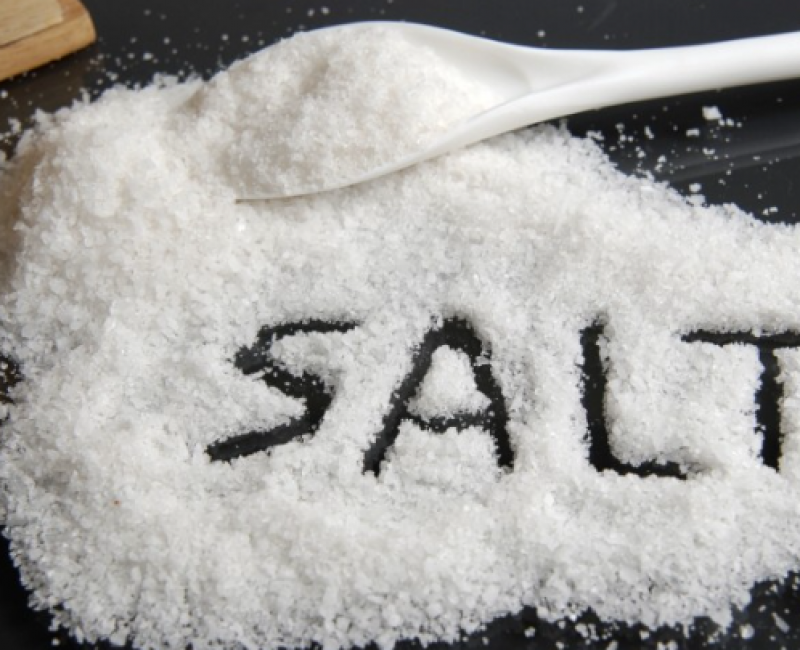Sugar gets a lot of bad press when it comes to unhealthy food choices. But too much salt can be a problem, too. And it’s not just an occasional bag-of-chips-binge-watching night that’s the issue. Nearly all Americans eat well over the maximum recommended salt intake every day.
“Everyone should be aware of how much salt they’re eating and how it affects them,” says registered dietitian Julia Zumpano, RD. She explains how salt impacts your body and the ways you can scale back without sacrificing flavor.
Is salt unhealthy?
Salt isn’t unhealthy unless you eat too much of it. Here’s the deal: Salt and sodium aren’t the same things. Salt is composed of two minerals — about 40% sodium and 60% chloride. Sodium is what can negatively affect your health if you consume too much.
But your body also needs sodium to survive. In small amounts, it helps your nerves and muscles function properly and balances fluid in your body.
You need a minimum of 1,500 milligrams of sodium a day, says Zumpano. Going below that leads to low blood pressure and electrolyte imbalances in your blood. Signs of too little sodium include:
- Dizziness.
- Headache.
- Lack of energy.
- Muscle fatigue.
- Nausea.
But for most people, getting enough sodium isn’t a concern. It’s in many foods that Americans frequently eat. And no matter what kind of table salt you add to your food at home — iodized salt, sea salt, kosher salt or Himalayan pink salt — it’s all the same when it comes to the amount of sodium it contains. The only difference is that some varieties may have other beneficial minerals, notes Zumpano.
How much salt is too much?
The U.S. Food and Drug Administration (FDA) recommends that adults eat less than 2,300 milligrams of sodium a day. That’s about one teaspoon of table salt.
“If you eat more than that in one day, it’s not going to hurt you,” says Zumpano. “But if you consistently exceed the recommended amount, you’re eating too much, and it can impact your health.”
Most Americans consume about 3,400 milligrams of sodium a day. Only elite athletes or people who profusely sweat could possibly need this much sodium.
Effects of eating too much salt
A sodium-heavy diet makes you retain fluid, which leads to swelling in the short term. But far more concerning is its impact on your body over time. Excess sodium intake can negatively affect your kidney function. It also leads to high blood pressure, the top risk factor for stroke.
“If you only check your blood pressure once a year at your checkup, it could be normal that day,” explains Zumpano. “Perhaps you’ve fasted, had a cup of coffee, peed a lot, and so your blood pressure seems fine. But it might not be so normal if you were tested after eating out at a restaurant.”
Signs your sodium intake is too high
It’s important to know how sodium affects you, as everyone is different. After eating a salty meal, look for the following signs to see if you’re more sensitive to sodium’s effects.
Bloating
Sodium attracts water. If you eat a lot of salty foods, you’ll experience fluid retention (when sodium holds water in your body). The result? You feel swollen and look puffier, especially around the abdomen and eyes. You may also notice swelling in your hands and feet.
Increased thirst
Recent research shows higher levels of sodium don’t cause people to be thirstier. But despite that, some people can’t help but chug down more liquids after eating salty foods.
Rise in blood pressure
Sodium is primarily located in our blood, and it pulls water to it. So, if you eat too much sodium, more water enters your bloodstream. The greater volume of blood pushes against blood vessel walls, causing high blood pressure (hypertension).







































































































This Post Has One Comment
Pingback: The Health Benefits of Garlic - ngrDesk News – Breaking News, Nigerian News, Entertainment, Fashion and Styles, Sport, Business and Politics